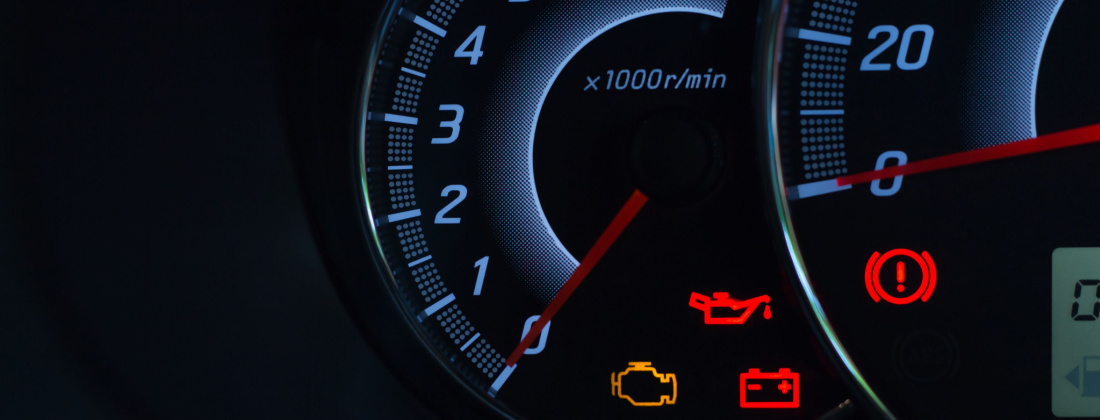
Check Engine Light Causes
A check engine light might give you a terrible sensation and a hole in your pocketbook. It might indicate a costly problem, such as a faulty catalytic converter, or it could simply be a loose part. Regardless of your concerns, it would help if you had it checked out. This ensures that minor flaws may be addressed before they cause significant harm. The check engine light should never be ignored.
The check engine light, also known as the Malfunction Indicator Lamp, is a signal generated by the engine control unit (ECU) that indicates a problem with the engine system. A variety of problems might cause the check engine light to illuminate which include exhaust emissions, battery problems, and other engine-related concerns.
What exactly does a check engine light mean?
When your car’s check engine light appears on the dashboard, it can cause a feeling of unease. The light might indicate a minor problem, such as a malfunctioning gas cap, or a more major problem, such as a misfiring engine. In many circumstances, you can visit a repair shop to get the problem fixed, and the light turned off.
Check engine lights might be orange, yellow, or amber, depending on the manufacturer. However, if the light starts flashing, it signifies a more serious issue, such as a misfire, which may quickly overheat the catalytic converter. These emissions devices run at high temperatures to reduce emissions, but they can cause a fire if they fail. It could also potentially indicate a catastrophic engine failure.
Top causes for a check engine light
The check engine light might be caused by several factors related to the engine, fuel, and exhaust systems. A diagnostic tool will inform you which system is at issue, and you may run tests to pinpoint the particular problem. Here are a few examples of typical problems that result in a check:
Examine the battery’s condition using a voltmeter; it should satisfy the minimum cranking amperage specified in your owner’s manual. The battery may deplete over time or after being kept on overnight. Check for corrosion on the different terminals and damage to the fuse box.
-
Fan, alternator or serpentine belt
These belts work hard to keep the automobile cool, transfer electrical energy, and are an essential engine component. They might be damaged by loose particles or wear and tear over time. To improve your engine’s performance, inspect the belts and replace them as needed.
The oxygen sensor detects unburned oxygen in the exhaust. This also measures the amount of fuel burned directly related to emissions. The sensors are frequently exposed to exhaust fumes, which can degrade sensor quality. A defective sensor causes the ECU to modify the engine’s efficiency, resulting in a higher MPG.
It can ultimately cause catalytic converter issues, which could end up costing over $2,000. Oxygen sensors are readily changed, and the DTC indicates which one is malfunctioning.
Toxins will enter the system, or fuel vapours may seep if the fuel cap is loose, cracked, or damaged. Both of these will notably affect emissions, which normally sets off the engine light. A gas cap should be replaced if it is damaged and shouldn’t be too expensive to do so. This should also improve your MPG.
-
A faulty catalytic converter
The catalytic converter is an exhaust system component that works to limit the number of hazardous exhaust gasses. It turns potentially dangerous carbon monoxide into carbon dioxide. A faulty catalytic converter will reduce fuel economy and may cause the vehicle to enter limp mode. It typically fails while driving in primarily urban areas, with frequent stop-starts that prevent the catalytic converter from regenerating.
-
A faulty mass air flow sensor
The mass air flow sensor informs the ECU about the air entering the engine, allowing the proper amount of fuel to be utilized. A defective mass airflow sensor might cause your automobile to stall and reduce your MPG.
It can fail due to a malfunctioning air filter, which should be replaced once a year as part of your annual or regular service. You can keep driving with a faulty mass airflow sensor, but your pocketbook will suffer.
What can I do about the check engine warning light?
There are various quick fixes that could turn the light off:
Check Dashboard gauges
These can be triggered by low oil pressure or overheating and can be repaired after you pull over.
Tighten your fuel cap
A loose gas cap may indicate that your gasoline is becoming polluted while driving due to dirt, bugs, or water. Contaminated gasoline causes fuel to remain unburned in exhaust, resulting in pollution warnings. It may take numerous trips to reset, and your car may have a distinct light entirely.
Lower your speed and reduce your load
An illuminated check engine light might indicate major engine problems. Reduce its burden by slowing down and, if possible, remove anything that weighs it considerably, such as a toolbox or other considerable weight.
Call the professionals at Ward Tire today!
Our mission is to provide the best service in the area and the automotive industry. Our team has become well-known for going above and beyond to keep our customers safe. Could you not take our word for it? Feel free to check out our google reviews. We are committed to retaining our customers for years to come, which means we will treat you like family. Many of our stores operate on a very flexible schedule making the tire and auto repair process more convenient.
We offer all the popular brands like MICHELIN®, BFGoodrich®, Uniroyal®, Cooper, Hankook, Falken, General, Continental, Toyo, Kumho, Pirelli, Mickey Thompson & Dick Cepek. We will surely have it in stock, whatever your preference or need.
We also offer automotive mechanical services at most of our locations. Services include wheel alignments, front-end work, steering, suspension, and many more.

